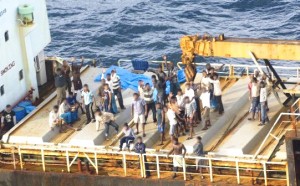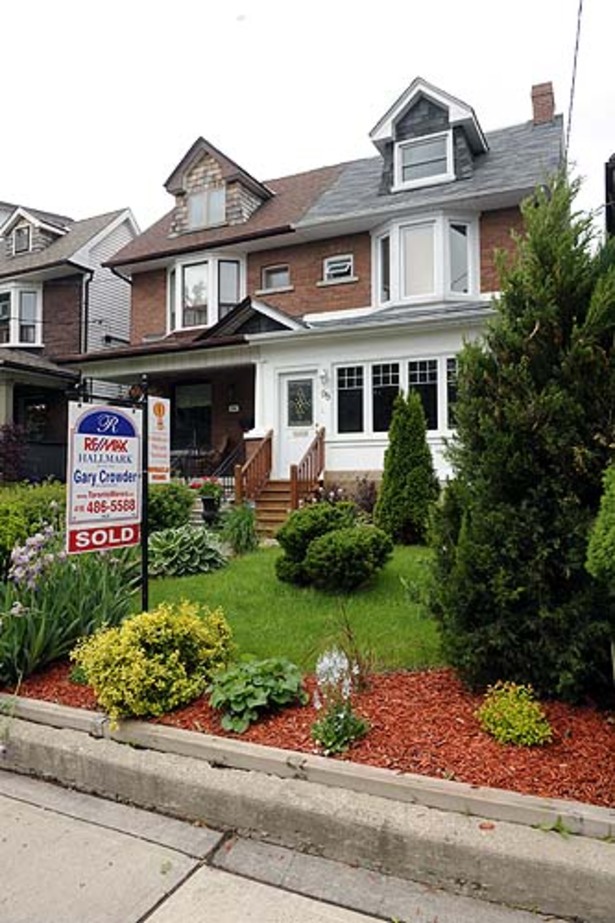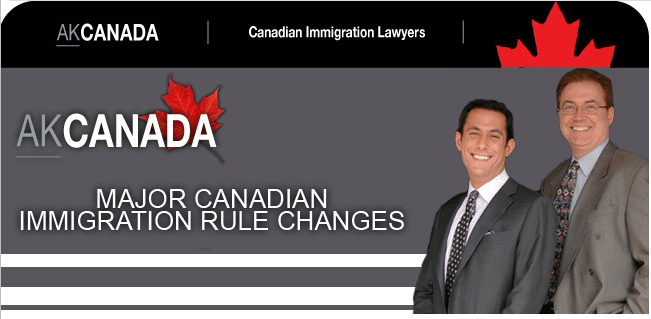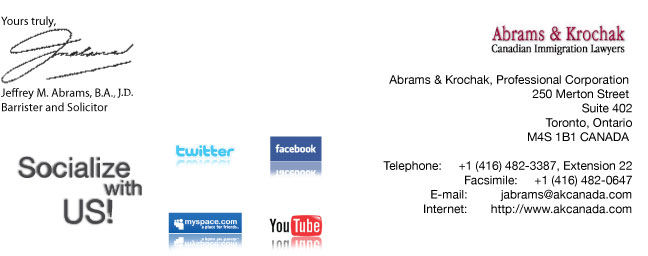Kenney to learn about human smuggling in Australia
OTTAWA – Canada’s immigration minister is travelling to Australia to see what can be learned about dealing with boatloads of illegal immigrants and refugee claimants.
Jason Kenney is currently on a 10-day trip through India, China and the Philippines to deal with the issue of overseas immigration fraud.
On a conference call with reporters on Thursday he announced that he would add a trip to the Australian capital of Canberra.
In addition to meeting with Australian officials, Kenney will also tour a detention centre for passengers on migrant boats.
Australia adopted a policy of processing these boats on remote Pacific islands back in 2001, a year that saw more than 5,000 people arrive by sea claiming refugee status.
The policy was discontinued in 2007 but brought back after more than 60 boats landed in 2009. The issue was a major factor in the Australian election last month that saw the Labour Party lose several seats and only hang onto power with the help of independents.
In addition to visiting Australia, Kenney announced that former CSIS director Ward Elcock has been asked to review the human smuggling situation.
The former spymaster will travel to Sri Lanka, Thailand and Australia to see what can be done to prevent more boats from heading to Canada.
Officials at the foreign affairs department say they are already working with other countries to prevent a repeat of the MV Sun Sea, which carried about 500 Tamil asylum seekers when it arrived in British Columbia last month.
The government acknowledges that more boats are likely but will not confirm rumours regarding how many. Estimates range from one ship to five heading to Canada over the next few months.
Illegal Migrant Ship Heading for British Columbia

Canadian Immigration Officials are monitoring a ship that may be headed to British Columbia. According to a Sri Lanka newspaper the ship is carrying Tamil migrants. According to the newspaper, the Colombo Observer, the ship is carrying 200 migrants, some of them Tamil Tigers.
The Colombo Observer reported that the ship was last spotted in May in the Gulf of Thailand.MV Sun Sea earlier known as Harin Panich 19, is captained by an LTTE Sea Tiger leader Vinod and manned by a 24-member crew. The Colombo Sunday Observer reports that the ship was heading towards Australia two weeks ago and the Sri Lankan Government tipped off the Australians. It also says that Canada is likely to admit the ships entry, but deny citizenship to those identified as LTTE.Just last October a ship that had crossed the Pacific Ocean and was intercepted in Canadian waters.
There were 76 Tamils aboard, which are now in the refugee system. Their claim was that Tamils were still being persecuted by the Sri Lankan government. Canada’s Immigration Minister, Jason Kenney, is trying to streamline the refugee process. Last year it announced VISA requirements for Mexicans and citizens of the Czech Republic due to bogus refugee claims. Refugee Claims are bogged down in bureaucracy with bogus claims, while real refugee claims are also held up. The governemnts new procedures are said to speed up those claims.
Take our FREE Online Assessment Today!
Socialize with Abrams & Krochak
Need A Job? Try Canada, Where Hiring Is Booming

Stubbornly high unemployment rates got you down? Not sold on the economic recovery? Look no further than America’s polite neighbor to the north, where jobs numbers are surging and home prices have been rising steadily for nearly a year.
Last month, Canada, a nation with roughly one tenth of our population, created about 10,000 more new jobs than America.
Yes, Canada’s economic recovery is outpacing our own. In terms of sheer job creation, June saw Canada create jobs at a pace that was five times the rate predicted by economists, Bloomberg News reports. Canada added 93,200 jobs in June, while U.S. private employers added just 83,000.
Thanks to strong hiring in the service sector,Canada’s unemployment rate fell to 7.9 from 8.1 percent, while America’s unemployment ratecame in at 9.5 percent in June, falling only because of a large exodus of Americans looking for work. All told, the U.S. lost 125,000 jobs in June because of a wave of Census layoffs.
Real estate prices tell a similar story. After 10 straight monthly gains, Canadian home prices rose0.3 percent in May, reports Bloomberg News. In the States, things are somewhat bleaker. Many areas showed small home price gains in May, , but in many other areas prices remain close to their April 2009 lows, according to the latest data from the widely-watched S&P/Case-Shiller index.
Canadian real estate broker Royal LePage predicts Canada’s home prices could rise an average of 6.8 percent in 2010. Meanwhile, the IMF, though remaining relatively upbeat on the U.S. housing and job markets, warned that the foreclosure crisis could lead to a double-dip in home prices.
Take our FREE Online Assessment Today!
Socialize with Abrams & Krochak
MAJOR CANADIAN IMMIGRATION RULE CHANGES
MAJOR CANADIAN IMMIGRATION RULE CHANGES

MAJOR CANADIAN IMMIGRATION RULE CHANGES
On Saturday, June 26, 2010, Citizenship and Immigration Canada announced major changes to the Independent/Skilled Worker Class and to the Investor Category of the Business Class with no advance notice.
A. INDEPENDENT/SKILLED WORKER CLASS
1. Changes
a. As of June 26, 2010, to be eligible to apply for Permanent Residence in Canada in the Independent/Skilled Worker Class, an applicant must:
- include the results of his/her official language proficiency test, AND
- have a valid offer of arranged employment, OR
- have one (1) year of continuous full-time paid work experience or two (2) years of continuous half-time paid work experience in at least one (1) of the following twenty-nine (29) occupations:
0631 Restaurant and Food Service Managers
0811 Primary Production Managers (Except Agriculture) – click on link for job description
1122 Professional Occupations in Business Services to Management – click on link for job description
1233 Insurance Adjusters and Claims Examiners
2121 Biologists and Related Scientists
2151 Architects
3111 Specialist Physicians
3112 General Practitioners and Family Physicians
3113 Dentists
3131 Pharmacists
3142 Physiotherapists
3152 Registered Nurses
3215 Medical Radiation Technologists
3222 Dental Hygienists & Dental Therapists
3233 Licensed Practical Nurses
4151 Psychologists
4152 Social Workers
6241 Chefs
6242 Cooks
7215 Contractors and Supervisors, Carpentry Trades
7216 Contractors and Supervisors, Mechanic Trades
7241 Electricians (Except Industrial & Power System)
7242 Industrial Electricians
7251 Plumbers
7265 Welders & Related Machine Operators
7312 Heavy-Duty Equipment Mechanics
7371 Crane Operators
7372 Drillers & Blasters – Surface Mining, Quarrying & Construction
8222 Supervisors, Oil and Gas Drilling and Service
b. A maximum of twenty thousand (20,000) Federal Skilled Worker applications will be considered for processing until July of next year. Within the twenty thousand (20,000) cap, a maximum of one thousand (1,000) Federal Skilled Worker Applications per eligible occupation (any one (1) of the twenty-nine (29) occupations that appears on Canada’s General Occupations (Demand) List) will be considered for processing until July of next year.
2. What does this mean?
a. Existing Clients of Abrams & Krochak
(i) Application already filed
If you are already a client of Abrams & Krochak and your Application for Permanent Residence in Canada was filed with Citizenship and Immigration Canada BEFORE June 26, 2010, the changes to the eligibility requirements for the Independent/Skilled Worker Class do NOT apply to you. Your Application will be processed in accordance with the eligibility requirements and General Occupations (Demand) List that existed from November 28, 2008 to June 25, 2010.
(ii) Application not yet filed
If you are already a client of Abrams & Krochak and your Application for Permanent Residence in Canada was NOT filed with Citizenship and Immigration Canada BEFORE June 26, 2010, the changes to the eligibility requirements for the Independent/Skilled Worker Class DO apply to you. Your Application will be processed in accordance with the new eligibility requirements and General Occupations (Demand) List that exist as of June 26, 2010. Your eligibility MIGHT be affected. If you ARE still eligible to apply, you should move to have your Application filed AS QUICKLY AS POSSIBLE before the quota for your particular occupation and/or the quota for the Independent/Skilled Worker Class is/are reached for the period of June 2010 to June 2011. Please send an e-mail to info@akcanada.com to ascertain your eligibility status and/or the current status of your Application.
b. Non-Clients of Abrams & Krochak
(i) Eligibility already assessed
If you had your eligibility to immigrate to Canada in the Independent/Skilled Worker Class already favourably assessed by Abrams & Krochak and wish to have your eligibility re-assessed in accordance with the new eligibility requirements, please send an e-mail to askus@akcanada.com with your request. You will receive your reassessment within one (1) business day.
If you had your eligibility to immigrate to Canada in the Independent/Skilled Worker Class already favourably reassessed by Abrams & Krochak OR you are certain that you meet the new eligibility requirements and you wish to apply for Permanent Residence in Canada as a Skilled Worker with our assistance, it is IMPERATIVE that you retain/engage our services AS QUICKLY AS POSSIBLE so that we can file your Application for Permanent Residence before the quota for your particular occupation and/or the quota for the Independent/Skilled Worker Class is/are reached. Otherwise, you may have to wait until next year’s List is announced; however, should you do so, you run the risk that your particular occupation might no longer appear on that List, thereby rendering you ineligible to immigrate to Canada as a Skilled Worker. If you no longer have instructions on how to retain/engage Abrams & Krochak’s services, please visit http://www.akcanada.com/resources/ind.cfm.
(ii) Eligibility not yet assessed
If you are interested in immigrating to Canada as a skilled worker but you have not yet had your eligibility to do so assessed by Abrams & Krochak, we invite you to complete our Free Online Assessment Questionnaire at http://www.akcanada.com/assessment.cfm. You will receive your assessment within one (1) business day.
B. INVESTOR CATEGORY OF THE BUSINESS CLASS
1. Changes
The Government of Canada is proposing new eligibility criteria for the Immigrant Investor Program. These proposed regulatory changes would require new investors to have a personal net worth of 1.6 million CAD, up from 800,000 CAD, and make an investment of 800,000 CAD, up from 400,000 CAD. As a result, Citizenship and Immigration Canada will temporarily stop accepting new Applications until the changes are finalized. Only Applications postmarked or received before June 26, 2010, will be accepted. This will prevent a flood of Applications before the new criteria take effect, which would stretch processing times even further.
2. What does this mean?
a. Existing Clients of Abrams & Krochak
(i) Application already filed
If you are already a client of Abrams & Krochak and your Application for Permanent Residence in Canada was filed with Citizenship and Immigration Canada BEFORE June 26, 2010, any changes to the eligibility requirements for the Investor Category of the Business Class will NOT apply to you. Your Application will be processed in accordance with the eligibility requirements that existed from November 28, 2008 to June 25, 2010.
(ii) Application not yet filed
If you are already a client of Abrams & Krochak and your Application for Permanent Residence in Canada was NOT filed with Citizenship and Immigration Canada BEFORE June 26, 2010, any changes to the eligibility requirements for the Investor Category of the Business Class MIGHT apply to you. Furthermore, you will be unable to file your Application with Citizenship and Immigration Canada until such time as the moratorium on new Investor Applications is lifted. Current speculation is that the moratorium will not be lifted until the fall of 2010.
In the circumstances, you have one (1) of two (2) options:
1. You can wait until the moratorium is lifted and, if new eligibility requirements are enacted, see whether you meet them and then decide what to do.
OR
2. You can consider migrating to Canada NOW in the Entrepreneur Category of the Business Class, assuming you meet the eligibility criteria (click on the word “Entrepreneur” to learn about the eligibility criteria for this category).
Please send an e-mail to info@akcanada.com to ascertain your eligibility status and/or the current status of your Application.
b. Non-Clients of Abrams & Krochak
(i) Eligibility already assessed
If you already had your eligibility to immigrate to Canada in the Investor Category of the Business Class favourably assessed by Abrams & Krochak and wish to apply for Permanent Residence in Canada as an Investor with our assistance, you have one (1) of three (3) options:
1. If you wish to formally retain/engage our services (i.e. because you believe that you will meet the new eligibility criteria should they be enacted), you can do so; however, we would not be able to file your Application until such time as Citizenship and Immigration Canada lifts the moratorium on new Applications. Current speculation is that this will occur in the fall of 2010.
2. You can contact our office, again, in the fall of 2010 for a reassessment of your eligibility to immigrate to Canada in the Investor Category of the Business Class in accordance with the eligibility criteria in existence at that time.
3. You can consider migrating to Canada NOW in the Entrepreneur Category of the Business Class, assuming you meet the eligibility criteria (click on the word “Entrepreneur” to learn about the eligibility criteria for this category).
If you no longer have instructions on how to retain/engage Abrams & Krochak’s services, please visit http://www.akcanada.com/resources/bus_inv.cfm.
(ii) Eligibility not yet assessed
If you are interested in immigrating to Canada as an Investor but you have not yet had your eligibility to do so assessed by Abrams & Krochak, we invite you to revisit our website in the fall of 2010 (when there is more certainty as to the eligibility requirements for the Investor Category of the Business Class) and complete our Free Online Assessment Questionnaire at http://www.akcanada.com/assessment.cfm. You will receive your assessment within one (1) business day.

Archives
- November 2025
- June 2025
- March 2025
- February 2025
- December 2024
- October 2024
- June 2024
- May 2024
- April 2024
- January 2024
- November 2023
- July 2023
- June 2023
- May 2023
- January 2023
- November 2022
- April 2022
- March 2022
- February 2022
- October 2021
- June 2021
- April 2021
- October 2020
- September 2020
- June 2020
- May 2020
- April 2020
- March 2020
- December 2019
- January 2019
- December 2018
- November 2018
- August 2018
- June 2018
- April 2018
- January 2018
- December 2017
- November 2017
- April 2017
- January 2017
- December 2016
- November 2016
- October 2016
- September 2016
- August 2016
- August 2015
- January 2015
- December 2014
- November 2014
- June 2014
- April 2014
- March 2014
- February 2014
- December 2013
- May 2013
- April 2013
- January 2013
- December 2012
- August 2012
- June 2012
- March 2012
- January 2012
- September 2011
- August 2011
- July 2011
- June 2011
- February 2011
- January 2011
- December 2010
- November 2010
- September 2010
- August 2010
- July 2010
- June 2010
- May 2010
- April 2010
- March 2010
- February 2010
- January 2010
- December 2009
- November 2009
- October 2009
- September 2009
- August 2009
- August 2008
- July 2008
- June 2008
- May 2008
- April 2008
- March 2008
- February 2008
- January 2008
